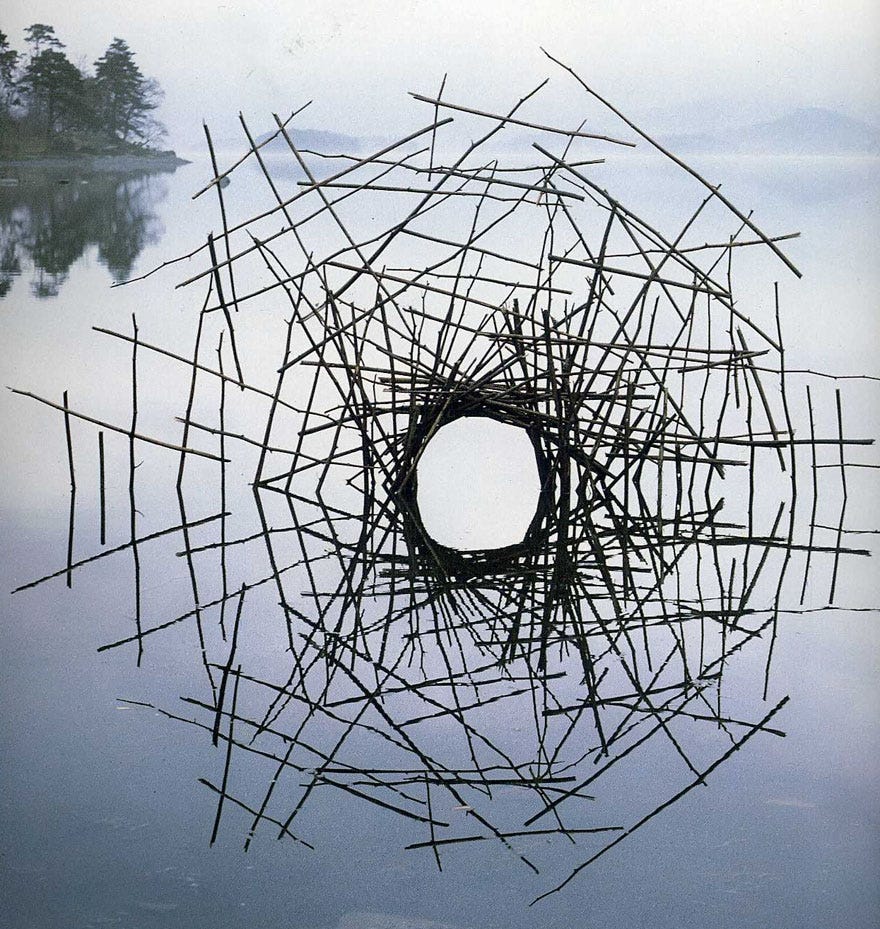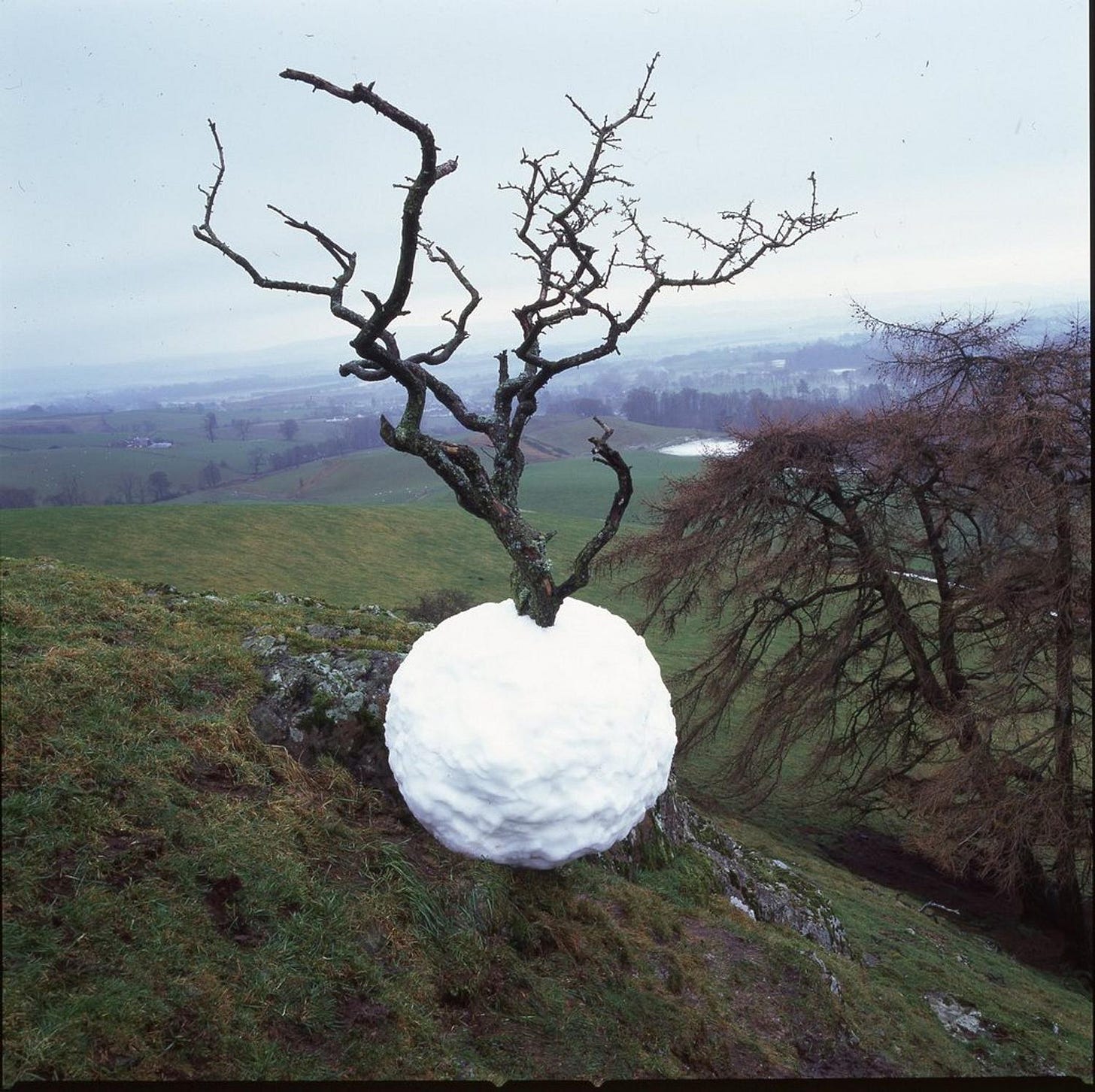Land Art: Andy Goldsworthy
What strikes you first about much of Andy Goldsworthy’s work is its transience. Sticks washed away by the tide, leaves strewn about by a single gust of wind. Sometimes, the delicate sculptures remain barely long enough to be captured on film.

Environmental art with a found art element, like the other land artists examined this week, Goldsworthy often seeks less to create beauty than to reveal it. He doesn’t harness nature so much as he collaborates with it, immersing himself in his surroundings, waiting for inspiration to appear. Seeing him in action is sometimes akin to watching a curious child in the woods, painstakingly crafting structures for imaginary friends; tenaciously undeterred, even as each iteration topples to the ground. And then, there’s that moment of triumph when, at last, his singular vision is realized. If it’s realized, that is. Unlike some artists, Goldsworthy isn’t shy about laying bare his failures for all to see. For him, it’s all part of the process.

With a career that spans decades, Goldsworthy also has several notable more permanent installations, including 2019’s “Walking Wall,” for which he and a crew built a limestone wall and then moved it stone by stone to traverse the landscape over a period of 10 months.
Transient or semi-permanent, there’s a precision and geometry to Goldsworthy’s work (he is, after all, the son of a mathematician); but never coldness -- this is a man unabashedly in love with, and in awe of, nature. Maybe that’s why at his hand common environmental themes like impermanence, decay and collapse take on a different tenor. We’re made aware of nature’s fragility — and, by extension, our own —but it’s not a hopeless lament. Rather, it feels like a reminder to find beauty in the world around us, in each passing moment, and in the delicate relationship between the two. Beauty, nature, life….they’re all fleeting, and at the mercy of circumstance and time. Nobody gets out alive. But Goldsworthy’s work isn’t a funeral; it’s a wake.


